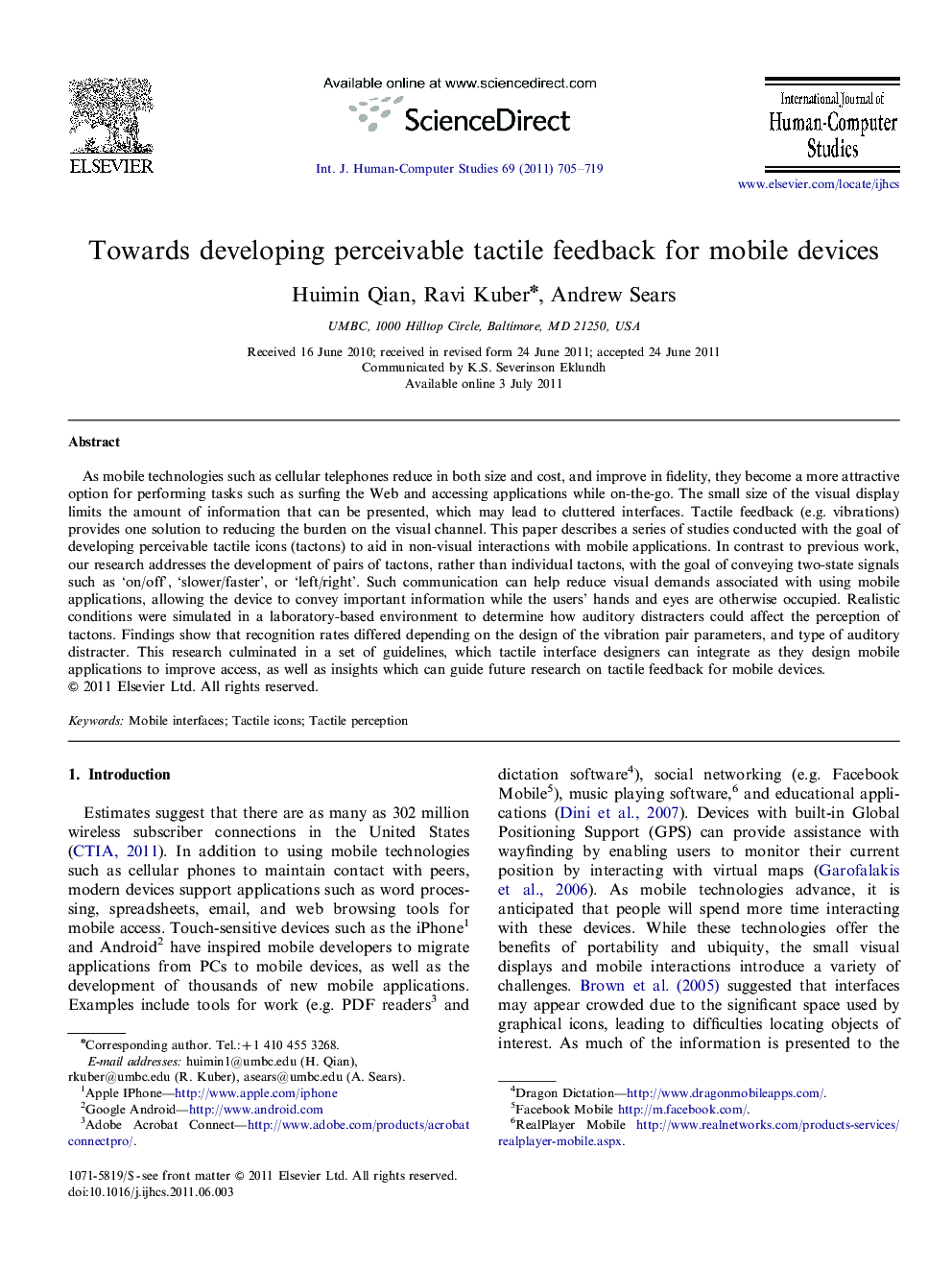| Article ID | Journal | Published Year | Pages | File Type |
|---|---|---|---|---|
| 401214 | International Journal of Human-Computer Studies | 2011 | 15 Pages |
As mobile technologies such as cellular telephones reduce in both size and cost, and improve in fidelity, they become a more attractive option for performing tasks such as surfing the Web and accessing applications while on-the-go. The small size of the visual display limits the amount of information that can be presented, which may lead to cluttered interfaces. Tactile feedback (e.g. vibrations) provides one solution to reducing the burden on the visual channel. This paper describes a series of studies conducted with the goal of developing perceivable tactile icons (tactons) to aid in non-visual interactions with mobile applications. In contrast to previous work, our research addresses the development of pairs of tactons, rather than individual tactons, with the goal of conveying two-state signals such as ‘on/off’, ‘slower/faster’, or ‘left/right’. Such communication can help reduce visual demands associated with using mobile applications, allowing the device to convey important information while the users’ hands and eyes are otherwise occupied. Realistic conditions were simulated in a laboratory-based environment to determine how auditory distracters could affect the perception of tactons. Findings show that recognition rates differed depending on the design of the vibration pair parameters, and type of auditory distracter. This research culminated in a set of guidelines, which tactile interface designers can integrate as they design mobile applications to improve access, as well as insights which can guide future research on tactile feedback for mobile devices.
► We describe a series of studies to aid interaction with mobile applications. ► We examine the perception of pairs of tactile icons presented via a mobile phone. ► Findings show that the design of tactile parameters can affect recognition rate. ► Realistic auditory distracters can also impact tactile perception. ► Guidelines are suggested for mobile interface designers interested in using touch.
